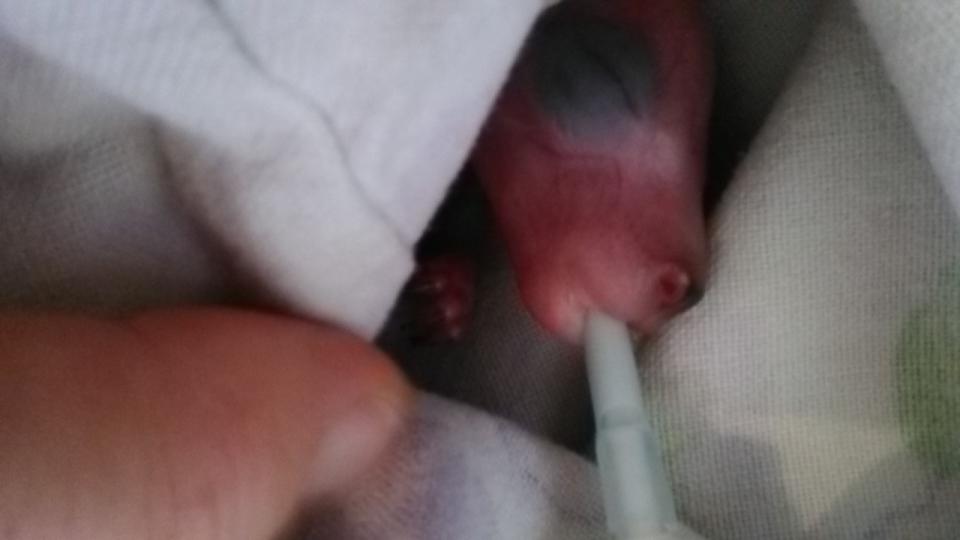'Decapitation unlikely to cause pain': Scary detail in new kangaroo shooter's guide
When you comb through the new proposed kangaroo shooting code there is a particular detail that has left experts horrified: It argues young joeys cannot feel pain.
The document appears to cite just one study to justify its conclusion, using research conducted in New Zealand ten years ago.
Wildlife carer Lynn Gynther worries that by telling shooters that pink, unfurred joeys are not sentient, it will encourage brutality.
“I’ve got a 95 gram wallaby on my lap at the moment. I’ve had a 180 gram eastern grey that I’ve reared this year,” she told Yahoo News Australia.
“When I clean their nostrils with a pair of tweezers they pull their little head away every time I come near.
“They’ve got the same sensations we have,” she explained.
“I wrote a letter to them and said what you’ve got to do is work with these animals instead of reading a book and assuming you know everything.”

‘Not likely to cause suffering’
While the draft code outlines guidelines for euthanising all species of commercially hunted macropods, the cited research appears to have specifically focused on the tammar wallaby, an animal with a gestation of only 28 days.
The red kangaroo for instance has an average gestation of 34 days and the eastern grey 37 days, suggesting an advanced maturity at birth.
“Marsupial young… may not have the capacity to experience the sensation of pain until they develop fur and open their eyes,” the draft code reads.
The report then goes on to suggest that “methods used to kill unfurred pouch young are not likely to cause suffering.”
The kangaroo commercial code review’s suggested method for euthanasia is “decapitation or cervical dislocation”.
As the NSW Department of Primary Industries and Agrifutures have not provided comment, it is hard to ascertain whether other research played a part in decision making.
A number of kangaroo welfare experts said they are appalled by the code’s assumption and went on the record about their reactions.

Veteran kangaroo researcher Dr David Croft told Yahoo News Australia the fact that unfurred joeys can negotiate their way into the pouch and find the teat, suggesting they have senses from the moment they leave the womb.
Dror Ben-Ami from kangaroo welfare group THINKK said there has been little research into whether pouch young feel pain and he’s only aware of one study.
The kangaroo code is there to ‘look nice’
Mr Ben Ami believes the kangaroo harvesting industry has issues with dependent joeys living outside the pouch.
He spoke to Yahoo News Australia from Israel, saying the young kangaroos rely on their mothers from nine months to a year and a half.
“If the mother is killed, the young at foot will jump away quite often and they’re almost impossible to catch and kill.
“Then surely the young at foot has a very high chance of slowly dying from starvation, dehydration or exposure to extreme temperatures.
“So, there’s a death warrant on young at foot and there is likely inhumane deaths for pouch young.”
'Cooking alive': The desperate fight to save Australian wildlife from collapse
'You don’t sweat when terrified': Inside the evacuation of Aussie zoo threatened by bushfires
Revealed: The biggest challenge to saving fire-ravaged koala population

Mr Ben Ami said shooters are unlikely to try and shoot fleeing joeys as their carcasses are ultimately not saleable.
He is concerned that the commercial kangaroo code is just written to “look nice” and is not enforceable.
He believes that despite the code recommendations, out in the paddocks, thousands of kilometres from park rangers, the shooters could do as they please without anyone knowing.
Submissions to the National Code of Practice for the Shooting of Kangaroos and Wallabies for Commercial Purposes close on January 24 and can be made here.
Industry representatives did not respond to questions from Yahoo News Australia.
The author, Michael Dahlstrom, is a registered native bird carer in NSW.
Do you have a story tip? Email: newsroomau@yahoonews.com.
You can also follow us on Facebook, Instagram and Twitter and download the Yahoo News app from the App Store or Google Play.




